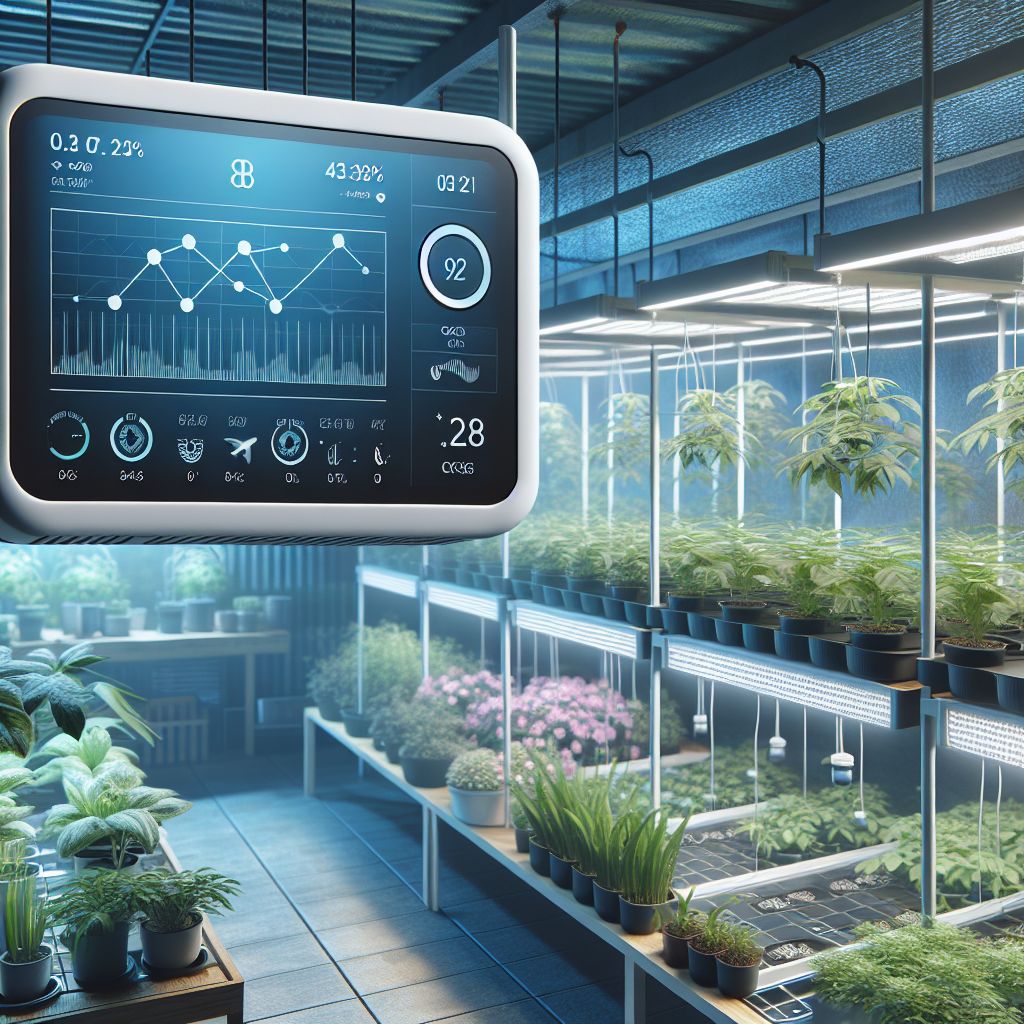Key Takeaways
- Choose a location with optimal sunlight, shelter from extreme weather, and easy access to resources like water and power.
- Invest in automated climate control and smart sensors to keep your greenhouse environment in balance.
- Select durable materials and design for your greenhouse structure to ensure longevity and efficiency.
- Implement techniques like hydroponics and data analytics to boost plant growth and yields.
- Consider sustainability from the start by integrating renewable energy sources and water recycling systems.
Scouting the Ideal Spot: Choosing Your Greenhouse Location
First things first, where you place your greenhouse matters as much as what you put inside it. You’ll need a spot that gets plenty of sunlight year-round, is protected from harsh weather, and has easy access to essential resources.
Considering Climate Zones for Smart Greenhouse in USA
Understanding your local climate zone is crucial. Different plants thrive in different conditions, and your greenhouse will need to compensate for your area’s specific climate challenges. For instance, if you live in a colder region, you’ll need to focus on heating and insulation, while in a hotter area, cooling and ventilation will be key.

Analyzing Soil and Topography
While the soil beneath your greenhouse isn’t as critical as it is for outdoor gardening, it’s still important for drainage and stability. Look for level ground, or be prepared to level it yourself. Good drainage will prevent water from pooling under your greenhouse, which can lead to problems with humidity and pests.
Access to Resources: Water, Electricity, and Internet
Your smart greenhouse will need more than just soil and sunlight. Make sure you have:
- Access to a reliable water source for irrigation.
- An electrical connection for your climate control systems and sensors.
- Internet access, which is crucial for remote monitoring and control of your smart systems.
And don’t forget, you’ll also need to be able to get to your greenhouse easily for regular maintenance and care.
Sunlight Exposure and Seasonal Changes for Smart Greenhouse
Sunlight is your plants’ best friend, and you’ll want to make sure your greenhouse is placed to get as much of it as possible. Pay attention to the path of the sun across your property throughout the year, and think about how changes in the seasons might affect light exposure.
With the right location nailed down, you’re ready to start building a smart greenhouse that’s efficient, productive, and sustainable. In the next sections, we’ll dive into the advanced technologies and techniques that will help your greenhouse thrive.

“Stone Barns Center – Greenhouse | Flickr” from www.flickr.com
Building the Brain of Your Greenhouse: Essential Smart Technologies
Now, let’s get into the brains of the operation. A smart greenhouse isn’t smart without the right technology. These systems and devices are what make your greenhouse responsive and efficient, adjusting to the needs of your plants in real time.
Automated Climate Control Systems
One of the first things you’ll install in your smart greenhouse is an automated climate control system. This system will manage the temperature, humidity, and sometimes even the CO2 levels to create the perfect growing conditions for your plants. It’ll turn heaters on when it’s cold, fans or air conditioners on when it’s hot, and dehumidifiers on when it’s too damp—all without you lifting a finger.
Hydroponics and Aquaponics Integrations
Let’s talk about water. Traditional soil gardening is great, but hydroponics and aquaponics systems can be game-changers in a greenhouse setting. These soilless growing methods use water to deliver nutrients directly to your plants’ roots. They’re efficient, they save space, and they can significantly increase your yield.
Remote Monitoring and Smart Sensors
Smart sensors are the eyes and ears of your smart greenhouse. They’ll monitor everything from soil moisture to light levels and send that information back to your control system—or straight to your smartphone. With remote monitoring, you can keep an eye on your greenhouse from anywhere in the world.
Innovative Lighting Solutions for Plant Growth
Lights aren’t just for extending the day during those short winter months. The right lighting can boost plant growth and even affect the flavor and nutritional content of your produce. LED grow lights, for example, use less energy and can be tuned to the specific light spectrum your plants need to thrive.
The Infrastructure: Erecting a Durable and Efficient Greenhouse
Materials and Construction: From Glass to Polycarbonate
When building your greenhouse, the materials you choose will have a big impact on how well it performs. Glass is traditional, but polycarbonate panels are becoming popular because they’re strong, lightweight, and provide excellent insulation. Plus, they’re much less likely to break in a storm.
Energy-Efficient Designs and Insulation
Efficiency is key in a smart greenhouse. That means designing your structure to take advantage of passive solar heating and natural light as much as possible. Good insulation will help keep the heat in during the winter and out during the summer, saving you money on energy costs.
Structural Integrity: Weather Resilience Tips
Your greenhouse needs to stand up to the weather, no matter where you live. That means strong frames that can handle snow and wind, and secure foundations that won’t shift in a storm. A little extra investment in the structure up front can save you a lot of trouble down the line.
Maximizing Space: Vertical Farming and Modular Layouts
Space is at a premium in any greenhouse, so think vertical. Vertical farming techniques let you grow more in the same footprint by stacking your plants. And modular layouts mean you can rearrange your greenhouse as your needs change, without having to start from scratch.
Plant Management: Techniques to Ensure Optimal Growth
Soil Health and Nutrient Management
Even if you’re using hydroponics, you might still want some traditional soil beds in your greenhouse. Healthy soil is full of life—it should be rich in organic matter, with a balance of nutrients and a pH that’s just right for what you’re growing. Test your soil regularly and amend it as needed to keep your plants happy.
Irrigation Innovations: Saving Water with Technology
- Drip irrigation systems deliver water right to the base of your plants, reducing waste.
- Smart irrigation controllers adjust watering schedules based on weather forecasts and soil moisture levels.
- Recapture and reuse water where possible, using systems designed for water recycling.
These irrigation innovations not only save water but also make sure your plants get exactly what they need, when they need it.

Pest and Disease Control in a Controlled Environment
One of the great things about a greenhouse is that you have much more control over pests and diseases. But they can still get in, so you need to be vigilant. Use physical barriers like screens and row covers, and introduce beneficial insects that will eat the pests. And always quarantine new plants before adding them to your greenhouse to prevent the spread of disease. For more detailed strategies, explore our urban greenhouse IPM strategies for effective pest and disease control methods.
Example: I once helped a friend set up a smart greenhouse, and within weeks, they noticed a small aphid infestation. By quickly introducing ladybugs, which are natural predators of aphids, the problem was controlled without the need for chemical pesticides.
Data-Driven Decisions: Utilizing Analytics for Crop Yields
The data collected by your smart sensors isn’t just for monitoring, it’s for learning. Over time, you’ll start to see patterns in what makes your plants grow best. Maybe they like a little extra water on hot days, or they produce more when the temperature is a couple of degrees cooler. Use this data to make informed decisions that will increase your yields and the quality of your produce.
Paving the Way: Setting Yourself Up for Success
After laying down the groundwork, it’s time to ensure your smart greenhouse not only starts off strong but continues to grow and adapt successfully. This involves understanding the legal landscape, connecting with the community, and recognizing the market’s needs. Let’s set you up for a flourishing greenhouse journey.
Understanding Regulations and Certifications
Before you plant your first seed, make sure you’re up to date with local regulations. This could include building codes, water usage restrictions, and any agricultural certifications you might need. It’s also worth exploring if your smart greenhouse can be certified organic, which could open up a new market for your produce.
Networking with Other Greenhouse Growers
Don’t underestimate the power of community. Connect with other smart greenhouse growers to exchange tips, seeds, and stories. Local gardening clubs, online forums, and agricultural fairs are great places to start. Sharing knowledge can help you avoid common pitfalls and innovate together.
Evaluating and Leveraging Local Market Demands
What are people in your area craving? Maybe there’s a demand for organic herbs, heirloom tomatoes, or fresh salad greens. By understanding local market demands, you can tailor your greenhouse production to what sells best, ensuring your efforts are both profitable and appreciated.
Funding and Grants for Smart Greenhouse USA Projects
Starting a smart greenhouse can be an investment, but there are resources out there to help. Look into agricultural grants, local government funding, or even crowdfunding. Some renewable energy initiatives may offer financial incentives for integrating solar panels or other green technologies into your setup.

“Roy Lycorish, assistant farm manager …” from www.flickr.com
FAQ on Smart Greenhouse USA
How Does a Smart Greenhouse Differ from a Traditional One?
A smart greenhouse uses technology to create the ideal growing conditions automatically. It’s equipped with sensors and systems that control temperature, humidity, light, and water distribution, based on the real-time needs of the plants. This leads to higher yields and less manual labor compared to traditional greenhouses.
Can a Smart Greenhouse Operate Completely Off-Grid?
Yes, with the right setup, a smart greenhouse can operate off-grid. Solar panels, wind turbines, and rainwater collection systems can provide the necessary energy and water. However, it’s important to ensure these systems can meet the greenhouse’s demands consistently, especially in adverse weather conditions.
What Are the Initial Costs of Setting Up a Smart Greenhouse?
The initial costs of setting up a smart greenhouse can vary widely, depending on size, technology, and materials. Generally, you can expect:
- Structure and construction: $1,000-$25,000
- Climate control systems: $500-$5,000
- Smart sensors and automation: $100-$2,000
- Lighting solutions: $100-$1,000
- Additional costs for renewable energy systems and water recycling may apply.
How Can I Ensure the Security of a Smart Greenhouse?
Security is important, both in terms of data and physical access. Use secure, password-protected networks for your smart systems, and consider security cameras or alarms for the greenhouse itself. Regularly update your software to protect against cyber threats, and keep a close eye on who has access to your space.
- Use strong, unique passwords for all your smart systems.
- Install physical barriers and security cameras as deterrents.
- Regularly update software and firmware to patch vulnerabilities.
- Limit access to the greenhouse to trusted individuals.
Which Types of Plants Are Best Suited for a Smart Greenhouse?
Smart greenhouses can support a wide variety of plants, but some are particularly well-suited to the controlled conditions. These include optimal Brassica Juncea development.
- Leafy greens like lettuce, spinach, and kale, which thrive under consistent conditions.
- Herbs such as basil, cilantro, and mint, which can be sensitive to weather changes.
- Vegetables like tomatoes, cucumbers, and peppers, which benefit from precise watering and temperature control.
- Ornamental flowers and plants that require specific light cycles and humidity levels.
Remember, the key to a successful smart greenhouse is understanding the needs of your plants and using technology to meet those needs. With the right setup, you can grow almost anything, regardless of the weather outside.





